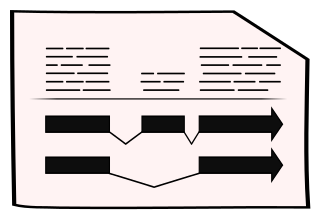Caenorhabditis remanei
BioProject PRJNA577507 | Data Source University of Oregon | Taxonomy ID 31234
About Caenorhabditis remanei
Caenorhabditis remanei is a small, free-living roundworm from the "Elegans" supergroup of the Caenorhabditis genus found in North America and Europe in soil, rotten fruits and vegetables and compost. C. remanei is a model for studying natural genetic variation and experimental evolution. They are feed on the bacteria and other micro-organisms associated with plant decay. The biology of C. remanei is similar to that of C. elegans, with a short generation time through four larval stages into an adult. Its closest species is C. latens. C.remanei has has a gonochoristic mating system (obligate outcrossing with male and female adults), unlike the hermaphroditic species such as C. elegans and C. briggsae. All three species are often found at the same site. C. remanei is frequently found associated with snails, slugs, millipedes, mites and pill bugs, which are presumed to transport worms, especially the dormant dauer stage, from one location to another, as with other Caenorhabditids. Genomes of 4 C. remanei strains have been sequenced, and more than 40 laboratory strains are currently available in Caenorhabditis Genetics Center (CGC).
There are 3 alternative genome projects for Caenorhabditis remanei available in WormBase ParaSite: PRJNA248909 PRJNA248911 PRJNA53967
Genome Assembly & Annotation
Assembly
This is a chromosome-level genome assembly of the C. remanei PX506 inbred strain created from a wild isolate from an isopod collected in a forest near Toronto (Canada) Teterina et al., 2020. The assembly was generated with PacBio long reads (SRX6989873, SRX6989874) and chromatin conformation capture (Hi-C) data (SRX6989872) using FALCON Chin et al., 2016 and the HiRise pipeline Putnam et al., 2016 by Dovetail Genomics. Illumina short reads of strain PX506 have been used (SRX6989866, SRX6989867; University of Oregon Sequencing Facility, Eugene, OR; PRJNA577507) to verify the genome assembly and the addition of the mitochondrial genome.
Annotation
For the annotation of the C. remanei genome, proteins from C. elegans (PRJNA13758), C. briggsae (PRJNA10731), and C. latens (PRJNA248912) from WormBase 260 have been used with MAKER2 (Holt and Yandell et al., 2011); RNA-seq from the group's previous C. remanei studies (SRX3014311 and SRP049403) with BRAKER2, and ab initio gene prediction from GeneMark-ES (Ter-Hovhannisyan et al., 2008). Annotations from BRAKER2, MAKER2, and GeneMark-ES were combined with EVidenceModeler (Haas et al., 2008). CDS from EVidenceModeler were used to train AUGUSTUS (Stanke et al., 2006), and then CDS obtained from single-molecule long-read RNA sequencing (Iso-Seq) data (SRX6989868 and SRX6989871) were also added as hints for the final annotation with AUGUSTUS. See details of the annotation and repeat masking pipelines in Teterina et al., 2020.
Downloads
Tools
Key Publications
- Teterina AA, Willis JH, Phillips PC. Chromosome-Level Assembly of the <i>Caenorhabditis remanei</i> Genome Reveals Conserved Patterns of Nematode Genome Organization. Genetics, 2020;214(4):769-780
Navigation
Assembly Statistics
| Assembly | CRPX506, GCA_010183535.1 |
| Strain | PX506 |
| Database Version | WBPS19 |
| Genome Size | 130,480,874 |
| Data Source | University of Oregon |
| Annotation Version | 2021-04-WormBase |
Gene counts
| Coding genes | 26,308 |
| Non coding genes | 24 |
| Small non coding genes | 24 |
| Gene transcripts | 26,332 |
Learn more about this widget in our help section
This widget has been derived from the assembly-stats code developed by the Lepbase project at the University of Edinburgh











